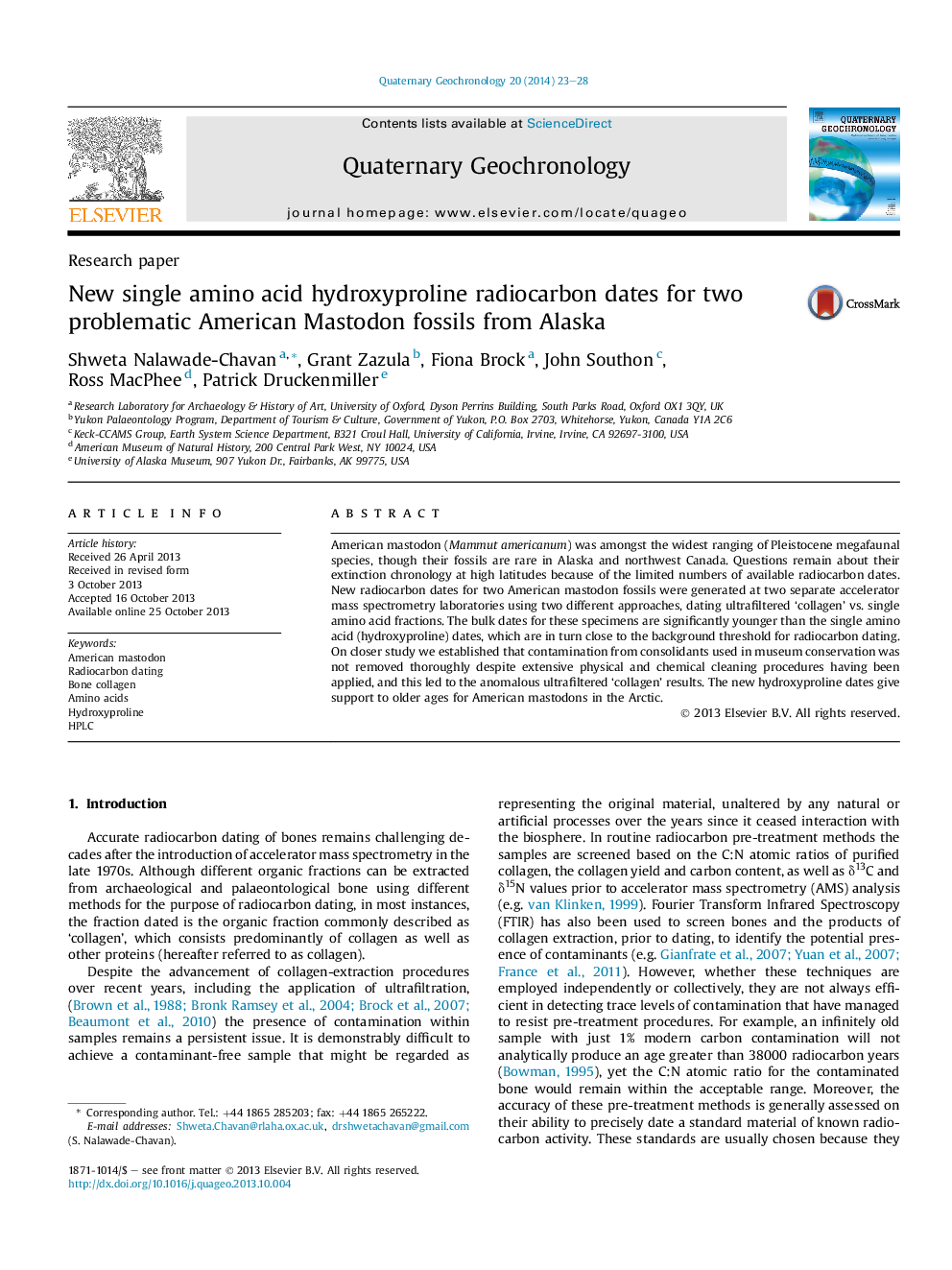| Article ID | Journal | Published Year | Pages | File Type |
|---|---|---|---|---|
| 4724982 | Quaternary Geochronology | 2014 | 6 Pages |
•We compare ultra-filtered collagen and single amino acid 14C dates for two American mastodons.•The ultra-filtered collagen 14C dates are much younger than the expected dates (∼20,000–34,000 BP).•Both hydroxyproline dates are close to the backgrounds (>44,000 BP).•Hydroxyproline dates are in agreement with hypotheses which suggest Mastodons extinction beyond the limit of radiocarbon dating.
American mastodon (Mammut americanum) was amongst the widest ranging of Pleistocene megafaunal species, though their fossils are rare in Alaska and northwest Canada. Questions remain about their extinction chronology at high latitudes because of the limited numbers of available radiocarbon dates. New radiocarbon dates for two American mastodon fossils were generated at two separate accelerator mass spectrometry laboratories using two different approaches, dating ultrafiltered ‘collagen’ vs. single amino acid fractions. The bulk dates for these specimens are significantly younger than the single amino acid (hydroxyproline) dates, which are in turn close to the background threshold for radiocarbon dating. On closer study we established that contamination from consolidants used in museum conservation was not removed thoroughly despite extensive physical and chemical cleaning procedures having been applied, and this led to the anomalous ultrafiltered ‘collagen’ results. The new hydroxyproline dates give support to older ages for American mastodons in the Arctic.
